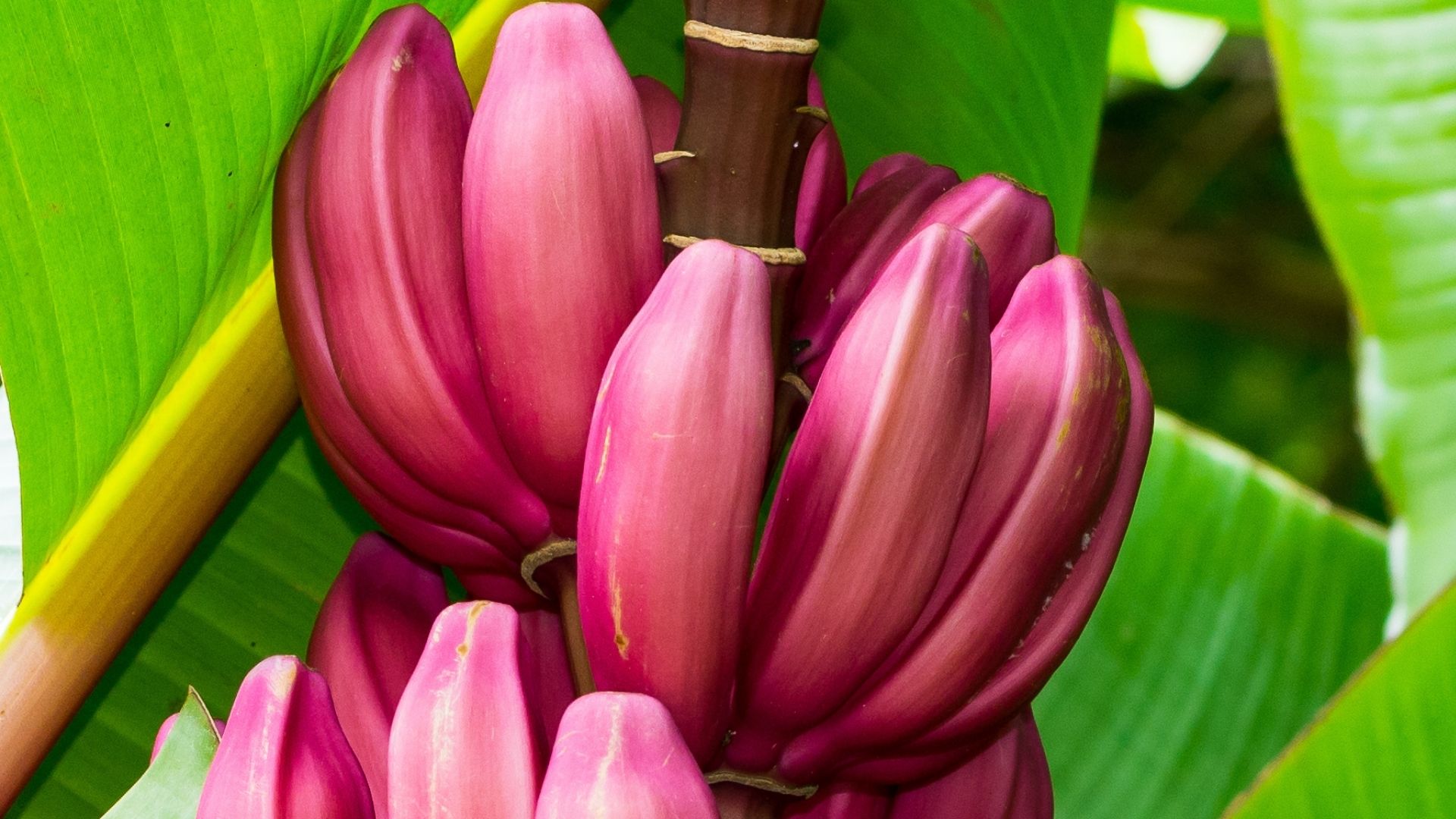
With roughly 1,000 varieties of bananas available around the world, it shouldn’t be a surprise that they grow in a variety of rich and beautiful colors. The Cavendish banana is a bright yellow color, which is what most of us are used to seeing, buying, and eating. But around the globe, there are a vast array of colors, including pink, red, blue, and even purple!
Most fruit is full of antioxidants, vitamin C, and fiber, among many other nutrients, and bananas are no exception. They are tasty food and incredibly beneficial for the human body, no matter the color!
In this article, we will discuss the purple banana, as well as interesting facts you probably didn’t know about this strain. Ready? Let’s go!
What is The Purple Banana?
The “purple banana” contains reddish-purple skin and tastes like yellow ones mixed with raspberries! And it reportedly has better health benefits than the traditional yellow ones we consume in North America.
Red bananas are typically shorter and plumper than yellow ones and should only be eaten when ripe. Red bananas will turn fully purple when baked. However, only in an acidic environment will it achieve a purple tint. Most baked goods aren’t acidic enough for that to happen. So, when cooking a red banana, if tiny amounts of gallic acid are used, a nice purple color will appear.
Other Fun Facts
- The reddish-purple skin on a ripe banana can appear to be purple.
- The purple banana is known as the “red banana” or the “Dacca” around the world.
- Its nutrients may contribute to improved heart and digestive health when consumed in a healthy diet.
- It is native to Southeast Asia.
- It’s mostly used in toppings or desserts such as ice cream and frozen yogurt because of the hint of raspberry tart and sweetness, but it can be paired with savory dishes as well.
- A small one is 90 calories.
- It is rich in potassium, which may help reduce blood pressure.
- It helps the digestive system, as it contains prebiotics, and it’s a good source of fiber.
- Purple bananas are smaller, denser, and have a sweeter flavor than yellow ones.
- It helps with nicotine withdrawal as it has high levels of magnesium and potassium.
- They can be used in face masks or hair masks for nourished and healthy skin and hair.
- Purple bananas have a longer shelf life than yellow ones.
FAQs about The Purple Banana
Is there a purple banana?
Yes, but it is actually red but appears purple. It is from the species called Musa acuminata.
Can a red banana turn purple?
If you bake a red banana with a few drops of acid, the bright red color will turn purple.
Are purple bananas real?
Purple bananas are a hybrid of two species of banana originally from Southeast Asia. The two species are Musa acuminata and Musa balbisiana. The skin is a dark red that appears purple to most. So, yes, they are real but, in fact, a reddish-purple color.
Where are they exported from?
They are exported by producers in East Africa, Asia, South America, and the United Arab Emirates.
Do they help in weight loss?
They do help with weight loss because they contain high levels of fiber, which keep you full for a long time, and they only contain about 90-100 calories, making them a healthy snack!
Final Thoughts
Purple bananas are available to consume and have many health benefits – much more than the yellow Cavendish ones. It also has a sweeter raspberry taste, which will be a delightful experience for your taste buds! So, if you ever have a chance to try one, pounce on it!

